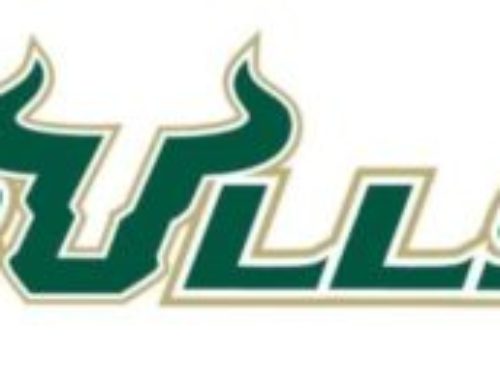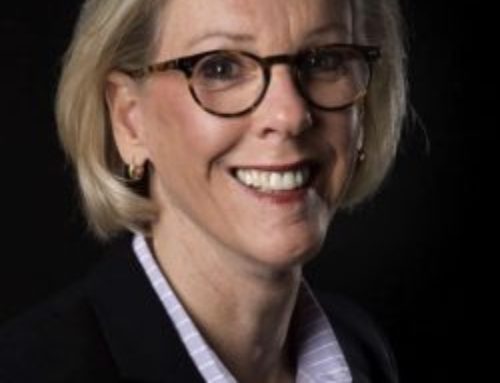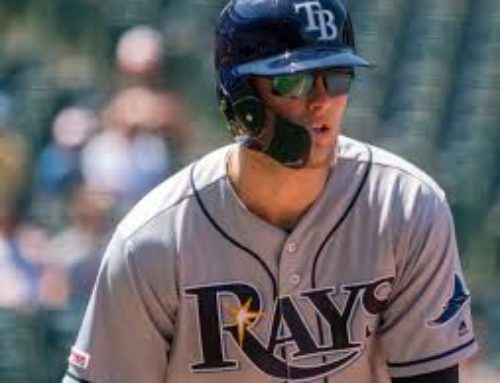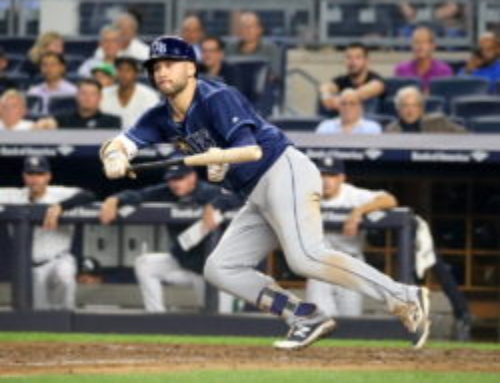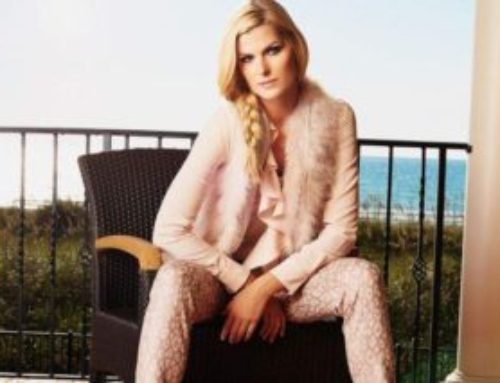With Tampa Bay In Its First World Series, The Sports World Very Well Could Be In Store For Another Miracle Finish
By JOEY JOHNSTON
Tribune Staff Writer
(c) Tampa Bay Times. Originally published Oct. 22, 2008.
Yes, Mike Eruzione still believes in miracles.
He was captain of the 1980 United States Olympic gold medal-winning hockey team, the “Miracle on Ice.” His 20-foot wrist shot toppled the unbeatable Soviets, triggering a wave of nationalistic pride, placing him at the forefront of the 20th century’s greatest sports moment, as defined by Sports Illustrated.
To his delight – and amazement – the memories define him, more than 28 years later.
“Sports is a powerful force,” Eruzione said. “It can last forever. If you work toward a common goal, you can accomplish anything. My gosh, look at the Tampa Bay Rays.”
Deep breath. One more time. Look at the Tampa Bay Rays.
To Underdog Nation, the Rays are now more of a symbol than a baseball team.
“I do not like what they did to my Red Sox,” said Eruzione, who lives in Boston. “But I love what the Rays stand for.”
From plucky team to national phenomenon.
“We have a chance to go from historic to legendary,” Rays principal owner Stuart Sternberg said.
Of course, the Rays still have work to do, beginning with tonight’s World Series opener against the Philadelphia Phillies at Tropicana Field.
But imagine the possibilities.
The Rays have a $43.8 million payroll – roughly equivalent to the left side of the Yankees’ infield – and nine last-place finishes in the franchise’s first 10 seasons.
They went from the worst record in baseball (66-96) to a 97 wins and the American League East title. Once, they were annually dismissed by Memorial Day. Now they could be playing until almost Halloween.
For now the Rays are chasing the Phillies, not history. When the script has been written, only then can proper perspective be added.
Even the 1969 New York Mets had to finish the job. They, too, were mired in losing for most of a decade. Then it all changed in one magical summer. Those Amazin’ Mets were immortalized after winning the World Series against Baltimore.
“The Mets were a part of America that people rallied around,” said Ron Swoboda, an outfielder on the ’69 Mets. “In some ways, if this [current] financial thing is as crazy and dangerous as it appears, with the politics polarized, an unpopular war in Iraq, all of it, people are looking for answers, something to follow, something to feel good about. It might be the Rays. I think they’re like us. They’re the kind of team you can fall in love with.”
The Cinderella Rays
George Mason University basketball coach Jim Larranaga loves the big upsets. His program was part of that in 2006, when it snuck into the NCAA Tournament as a No. 11 seed. Within 10 days, the Patriots had upset Michigan State, North Carolina and Connecticut to reach the Final Four.
“It’s like the old ‘Butch Cassidy and the Sundance Kid’ movie,” Larranaga said. “The other teams are saying, ‘Who are those guys?’ It’s almost like the other people don’t know what hit them.”
Who are the Rays? Well, who was George Mason?
“Our recruiting budget was somewhere in the neighborhood of $60,000 – and these teams we were beating, like North Carolina and Connecticut, they were spending in excess of $200,000,” Larranaga said. “We didn’t have a single McDonald’s All-American on our roster.
“So we weren’t supposed to do what we did. That’s not how the system is designed. You have more money, you have a better team. Right? Well, sometimes it’s about heart and determination. It’s kind of like the Rays.”
Kind of like the Rays.
“You’re drawn to the story of a team that works together,” said former Villanova basketball player Harold Jensen, who was 5-for-5 from the field in the 1985 NCAA Championship Game, when his Wildcats played the “Perfect Game” (shooting 78.6 percent) to stun top-ranked Georgetown, 66-64.
“It’s difficult relating to a team that has five Michael Jordan-type players on it. People can understand rising up from adversity. When you see the unexpected team, it’s almost like you’re living through them.”
Jensen lives in the Philadelphia area, working as executive vice president of Sparks, an event marketing company. He will attend the World Series. The Phillies are his team.
But like most Americans, the Rays are his story.
“I’m fascinated by Tampa Bay’s team,” Jensen said. “Sometimes, I look back at [Villanova beating Georgetown] and wonder how we got it done. But you know what? Some things, you don’t have to explain. Sometimes, you just go with it.”
That’s what happened in 1982, when 7-foot-4 center Ralph Sampson and the No. 1-ranked Virginia Cavaliers played at Chaminade University, an 800-student NAIA school in Honolulu. When the score came in, ESPN anchor Tom Mees refused to read it until double-checking. He thought it was a joke.
Chaminade 77, Virginia 72.
The biggest upset in college basketball history.
“Today, when people hear the word ‘Chaminade,’ they can think, ‘Yes, we can do it, no matter what the odds say,’ ” said Tony Randolph, the former Chaminade player who guarded Sampson that night and now works with troubled youths in Hawaii. “Look, I’m a basketball guy. But I’m going to be watching some baseball now. The Rays have a little piece of Chaminade in them.”
Making Another Miracle
Nearly 40 years ago, the AFL’s New York Jets, an 18-point underdog, beat the NFL’s Baltimore Colts 16-7 to win Super Bowl III. Audacious quarterback Joe Namath “guaranteed” the victory, forever cementing himself as an iconic figure.
But once, the Jets were ignored – even ridiculed – in their own town.
“We’d make an appearance at a banquet and they’d pay us $50,” former Jets linebacker Larry Grantham said. “If a Giants player did the same thing, they got paid $500. We were treated like second-class citizens in our own city. That stuck in our craw.”
The other night, Grantham was home in South Haven, Miss., watching the American League Championship Series. He rooted for the Rays.
“The Rays, I’m sure, were once told they didn’t belong with the Red Sox,” Grantham said. “Now they’re proving everybody wrong. I remember what that’s like. You want to show the world.”
James “Buster” Douglas, author of boxing’s most improbable moment, tuned in from Columbus, Ohio, the hometown that celebrated his stunning 1990 knockout of the supposedly unbeatable Mike Tyson. Douglas, a 42-to-1 underdog, captured the undisputed heavyweight title.
The fight was staged at the Tokyo Dome in Japan.
“As the story goes, (HBO announcer) Larry Merchant landed in Japan and went through customs,” Douglas said. “They asked him, ‘How long will you be in this country, Mr. Merchant?’ And he said, ‘Oh, about two minutes.’
“That’s what people expected. They never thought I would last with Tyson, let alone beat him. It’s an incredible feeling to prove people wrong. Right now, the Rays are proving everybody wrong.”
In Salt Lake City, former U.S. Olympic wrestler Rulon Gardner had friends over Sunday night to watch Game 7 of Rays-Red Sox.
“To me, it’s like the American dream,” Gardner said. “The Rays didn’t buy a championship. They built themselves up, from the ground floor. That’s how this country started. It’s an inspiration.”
Just like Gardner’s story.
He was a Wyoming farm boy, a Greco-Roman wrestler who couldn’t make the U.S. Olympic team until age 29. At the 2000 Sydney Games, Gardner took on Russian Alexander Karelin, unbeaten in 13 years of international competition, unscored upon for six years. NBC broadcaster Bob Costas, setting the stage, said the odds against Gardner were “2,000-to-1.”
Gardner won 1-0.
Now he makes a living as a motivational speaker.
“I’m going to use the Rays for an example now,” Gardner said. “They are showing such class and composure. I love what those guys are doing. Go Rays!”
Four more victories and the Rays have a spot alongside the all-time best stories in sports history.
“You might think the Rays are doing the impossible, but they don’t think that,” Eruzione said.
Four more victories and the Rays will be mentioned in the same breath as the Super Jets, N.C. State, Villanova, the Amazin’ Mets and the Miracle on Ice.
Ed Charles, a third baseman on the 1969 Mets, can see it coming.
“I think the Good Lord thinks it’s time for another miracle,” Charles said.

